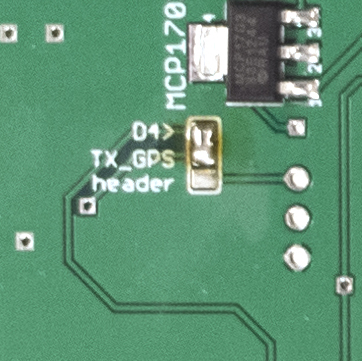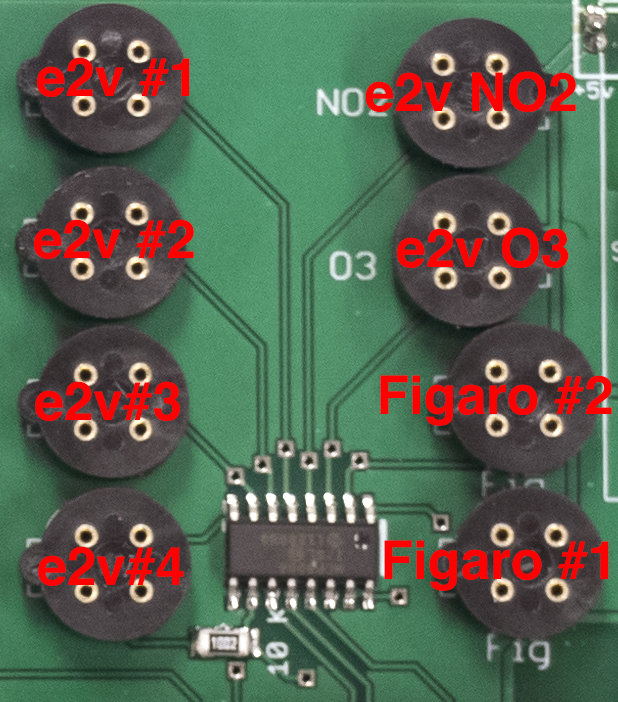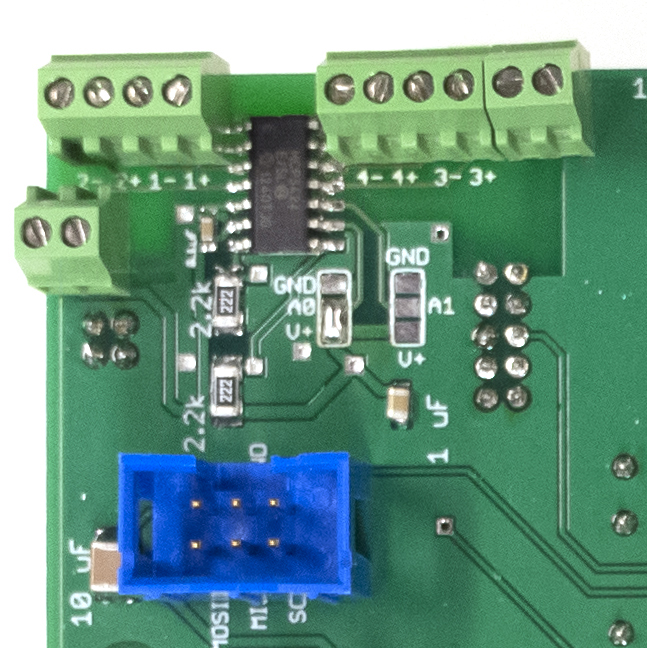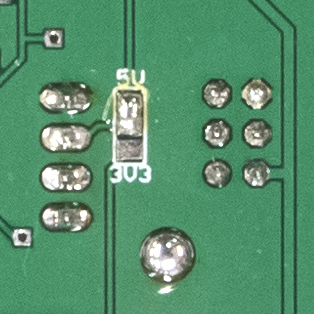Assembling the UPOD by hand requires good soldering skills. Every part except the BMP085 barometric pressure /temperature sensor and the GPS module can be soldered with a fine tip soldering iron and attention to detail. It is easiest to solder the board with a heat pen and solder paste. Even if you chose to have the UPOD assembled elsewhere, you will still need to configure the following features on the UPOD.
| On the rear of the the board, you will find jumpers which select the output from the GPS UART module. If you want the UPOD to log the GPS coordinates, then jump the GPS output to ‘D4′. If you jump the GPS output to the headers, then you can log the GPS data with an external datalogger. This may be advantageous if you want complete NMEA data streamed at 1Hz. |

|
| The UPOD is compatible with many varieties of metal-oxide type sensor. You may, however, need to change the signal and heater resistors on the rear of the board. The UPOD is by default configured to accomodate an e2v NO2 sensor, an e2v O3 sensor and four generic e2v sensors (typically the CO sensor or CO/VOC sensor) |

|
The Figaro sensors (eg. methane) do not have a voltage divider on the heater. As such, a full 5V is dropped across the heater. The voltage output of the figaro sensor is is dropped across a 1K ohm resistor. The e2v sensors use a voltage divider to decrease the voltage dropped across the heater element. The default values on the UPOD were found to work well with their respective sensors. The voltage output is also dropped across a suitable resistor.

